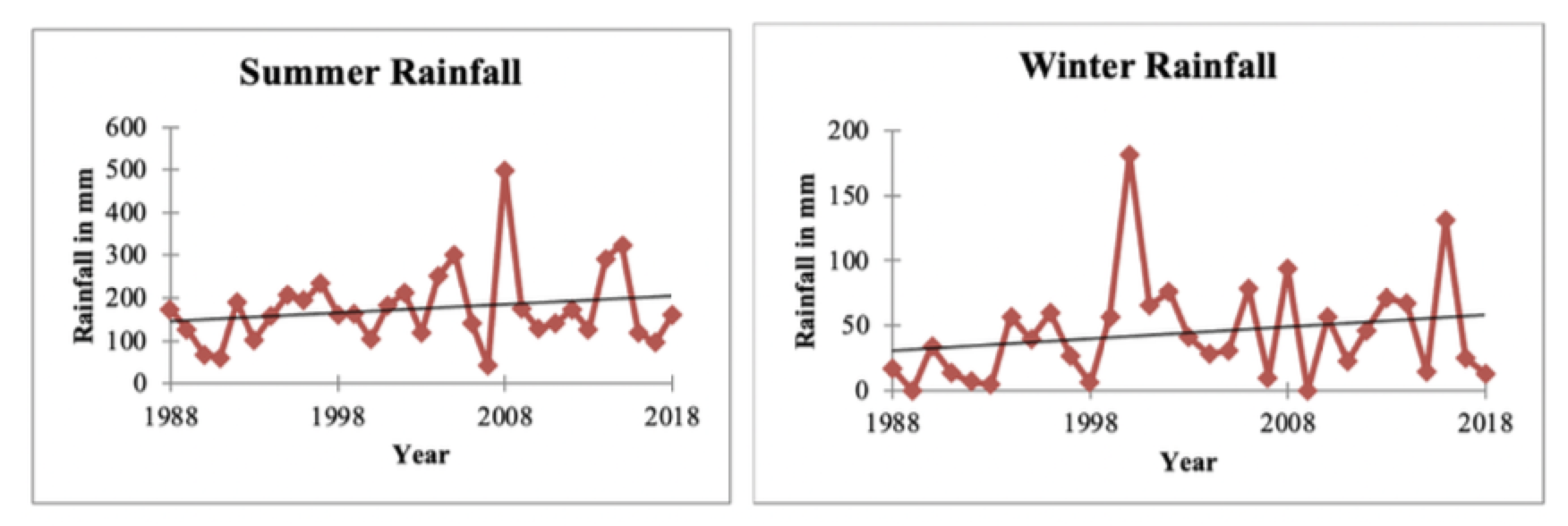
Geo-Eye
Department of Geography & GIS

Department of Geography & GIS

Geo-Eye
Year: 2021, Volume: 10, Issue: 2, Pages: 18-25
Original Article
R S Libina 1, R Jegankumar 2, K Prakash 3, D Venkita Surya 1, S P Dhanabalan 3, M A Arya 1
1 Research Scholar, Department of Geography, Bharathidasan University, Tiruchirappalli, Tamil Nadu
2 Professor and Head, Department of Geography, Bharathidasan University, Tiruchirappalli, Tamil Nadu
3 ICSSR Doctoral Research Fellow, Department of Geography, Bharathidasan University, Tiruchirappalli, Tamil Nadu
Received Date:12 June 2021, Accepted Date:27 September 2021
This study is an attempt to comprehend the spatial and temporal trend of rainfall distribution in the Nambiyar watershed. The daily rainfall data was processed for the period from 1988 to 2018 to map the spatial distribution and analyse the temporal trend of rainfall. The results reveals that mean annual rainfall received in the watershed is 1026.81 mm. Statistical techniques like Mann- Kendall test and Sen’s Slope estimator were used to analyse presence of trend and correlation of variables. Among four seasons northeast monsoon contributes around 47 per cent (482.57 mm) of the total rainfall. The results brought out the fact that annual rainfall of the watershed does not exhibit any significant trend at α=0.05 or 95% of confidence level. Agricultural and allied activities which requires adequate irrigation is determined by the rainfall received in this watershed. Hence this study brings out the spatial and temporal pattern of rainfall distribution in Nambiyar watershed.
Keywords: Rainfall trend, GIS, Sen's slope, Mann-Kendall test
© 2021 Libina et al. This is an open-access article distributed under the terms of the Creative Commons Attribution License, which permits unrestricted use, distribution, and reproduction in any medium, provided the original author and source are credited.
Published By Bangalore University, Bengaluru, Karnataka
Subscribe now for latest articles and news.